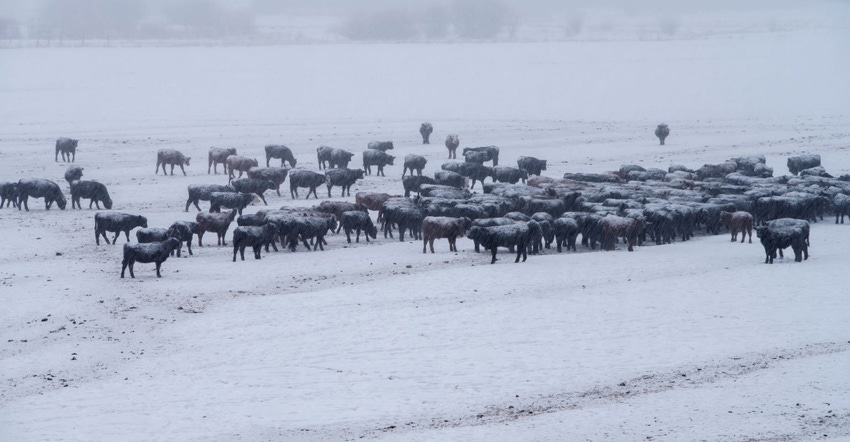As the storm of the season starts to bare down on the United States, here's a look at what cattle need to combat it.
December 22, 2022

This year, Dana Zook believes Santa may be sending winter weather from the North Pole so he will feel right at home while he makes his Christmas deliveries. Cattle producers know that cold temperatures mean extra supplement and hay may be needed. But how much extra feed are we talking about?
There are many things that impact the ability of cattle to tolerate cold and inclement weather but haircoat and amount of moisture present (rain, sleet, ice, snow) play the biggest role. In addition, cattle in a body condition under five have less cold tolerance. All cattle will need extra feed to maintain body condition and manage this environmental stress, but those needs may vary from one group to the next.
So how much extra nutrition are we talking about? The Mesonet Cattle Comfort Advisor is an excellent tool for getting an idea of cold conditions and extra nutrition needed. According to the Mesonet Cattle Comfort Advisor, a cows energy requirement increases 1% for each degree the index is below 32°. This energy need would double to 2% if the animal is wet to the skin. A good energy value to refer to is total digestible nutrients or TDN. Let’s look at the forecast for a realistic example.
The Mesonet is reporting below normal temperatures for the next 8-14 days, however it looks like our coldest temps will come on Thursday. If the temperature is 20° and there is no moisture, cattle will need an additional 12% energy to maintain body condition (32°-20° = 12°; 12°x 1%= 12% added energy). Cold plus moisture would cause the requirement to double to 24%.
So how much would producers need to feed gestating cows to meet this increased requirement? In the table below, supplements are listed according to the temperature and level of moisture. As the temperatures decrease and moisture is added, more feed is required to maintain condition.
On a normal day, a producer feeding a low-quality prairie hay (6% protein; 52% TDN) would need to feed 3 pounds of a 20% cube or 1.6 pounds of a 38% supplement to meet requirements.
Daily Supplement Required to Meet Cow Nutritional Requirements in Cold Weather |
Temp |
Above 32° |
20° Dry Cold |
20° Wet Cold |
In certain situations where higher levels of supplement are fed, increasing feed allotments may cause some digestive upset if fed all at once. In these situations, it may be beneficial to increase slightly a few days before and then again a few days after the storm. Also, cows that are normally fed just twice or three times per week may benefit from feeding more often to distribute higher feeding levels. A higher quality hay can also bridge the energy gap in these situations, but it is helpful to know the hay quality to determine feeding level.
Source: Oklahoma State University
You May Also Like



